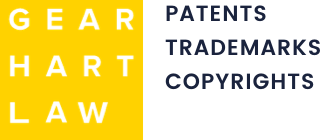If you’re thinking about protecting your invention, you’ve probably come across the terms “provisional” and “non-provisional” patent applications. At first glance, they sound similar—but they serve very different purposes. Deciding which one to file can affect your timeline, costs, and even your ability to enforce your patent rights later.
What Is a Provisional Patent Application?
A provisional patent application is often the first step in the patent process. It’s a simpler, more flexible filing with the United States Patent and Trademark Office (USPTO) that lets you secure an early filing date for your invention.
This type of application doesn’t require formal claims or a rigid structure. It’s not examined by the USPTO and won’t lead directly to a granted patent. Instead, it gives you a 12-month window to continue developing your invention or testing the market while holding your place in line.
Many inventors use this period to gather funding, tweak the design, or prepare for a full non-provisional filing. It’s a useful tool when you want protection in place quickly but aren’t quite ready for the formal process.
What Is a Non-Provisional Patent Application?
A non-provisional patent application is the formal filing that starts the examination process. This is the document the USPTO reviews to decide whether your invention meets the requirements for a patent.
Non-provisional applications must include the following:
- Detailed descriptions and drawings
- Formal claims defining what you want to protect
- Specific formatting and legal disclosures
Once submitted, the USPTO assigns an examiner to review the application. They’ll assess your invention’s novelty, usefulness, and whether it’s different enough from existing technology. If it passes, you’ll receive a granted patent—and, with it, enforceable rights.
This is the application that really matters when it comes to protecting your invention in the long run.
Key Differences Between Provisional and Non-Provisional Applications
Here’s how the two filings compare:
- Formality: A provisional application is informal and more flexible. A non-provisional must meet specific legal and technical requirements.
- Examination: The USPTO does not examine provisional applications. Only non-provisional applications go through a full review.
- Patent rights: A provisional application alone does not result in a patent. You must file a non-provisional within 12 months to keep your original filing date.
- Timing: The provisional gives you more time to refine your invention. The non-provisional moves you into the examination stage.
- Cost: Provisional filings usually cost less upfront, making them a lower barrier for early-stage inventors.
In many cases, inventors start with a provisional to lock in their filing date, then file a non-provisional when they’re ready to pursue full patent protection.
When Should You File One or the Other?
The best filing option depends on your goals, timing, and where you are in the invention process.
A provisional application may be the right choice if:
- You’re still refining your invention or making improvements
- You need time to raise money or test the market
- You want a lower-cost way to secure a filing date
A non-provisional application might be better if:
- Your invention is complete and ready to be reviewed
- You’re ready to secure enforceable patent rights
- You’re concerned someone else might file a similar idea soon
We help inventors consider the bigger picture—your business plans, timelines, and how your patent fits into it all.
How We Can Help
At Gearhart Law, we work with inventors at every stage—from initial ideas to granted patents. Whether you’re wondering how to document your invention for a provisional filing or need help preparing a non-provisional application for USPTO review, we’re here to guide you through it.
We’ve worked with inventors across New Jersey and beyond, helping protect innovations in a wide range of industries. If you’re unsure which type of patent filing is right for your invention, we’ll walk you through your options and help you move forward with confidence.
Moving Forward with Patent Protection
The difference between a provisional and a non-provisional patent application comes down to timing, requirements, and the stage of your invention. One helps you stake your claim; the other gets you on the path to patent protection. If you’re ready to take the next step toward securing your invention, reach out to Gearhart Law. We’ll help you file and protect what you’ve created.

